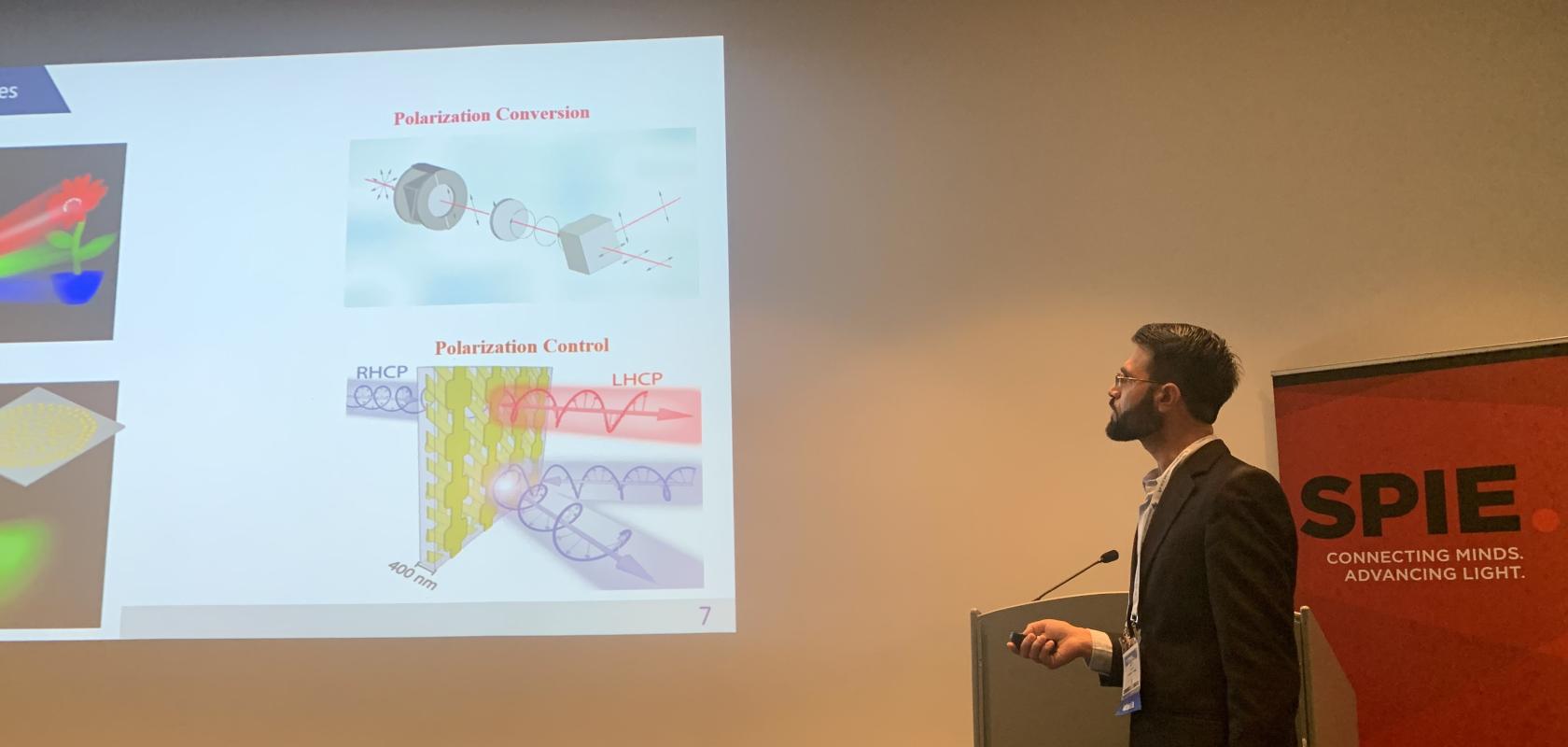An all-dielectric spin-switchable metasurface platform for wavefront manipulation has been developed that could help optimise beam shaping and steering.
The platform, which could have applications in optical communications and imaging, was presented this week at SPIE Photonex, currently underway in Glasgow, Scotland.
What are metasurfaces?
Metasurfaces are two-dimensional periodic arrays of artificially designed dielectric or metallic meta-atoms. They offer a compact and novel platform to manipulate the phase, amplitude, and polarisation of incoming wavefronts in a desired manner.
In polarisation control, for example, spin dependent metasurfaces have attracted significant attention due to the robustness of circular polarisation against the beam misalignment and multi-path effects.
Metasurfaces have therefore shown promise in applications such as polarisation conversion, beam steering, electromagnetic cloaking, hologram generation, computational imaging, and edge-enhanced imaging.
Researchers from Shenzhen University in China, working under the supervision of Professor XiaoQing Tian, have now developed a spin-switchable design principle based on metasurfaces that can perform various functions through changing the ‘handedness’ of incident light.
“We have designed and numerically realised spin-dependent versatile beam splitting and orbital angular momentum generation,” postdoctoral researcher Dr Naeem Ullah, told attendees at SPIE Photonex this week. “The proposed design approach has potential in applications such as optical communication, multiplexing, and imaging.”
Addressing issues in modern electronics
Metasurfaces could solve some of the central issues being faced by modern electronic devices, which suffer from energy loss and heat dissipation, meaning cooling is often required in order to achieve better performance.
However, according to Ullah, the extensive literature on recent metasurface-based devices has revealed the potential limitations of the published designs, which often exhibit: fixed functionality, low efficiency, linear response, low switching speed, spin-locking, and more.
Ullah’s research is seeking to address the spin-locking limitation, with the new platform offering spin-switchable, reprogrammable, multi-functional metasurfaces. Metasurfaces that “combine the polarisation-insensitive geometric phase and engineered propagation phase”, Ullah explained.
So far, three spin-switchable metasurfaces have been designed by Ullah and his colleagues offering a range of functions:
- Spin-switchable beam deflection and orbital angular momentum generation
- Spin-switchable beam splitting and deflecting
- Spin-selective focusing
The research could pave the way to additional research on spin-switchable metasurfaces, Ullah concluded in Glasgow.


